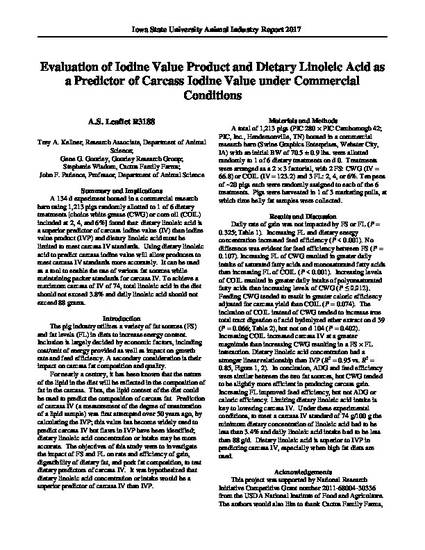
A 134 d experiment housed in a commercial research barn using 1,213 pigs randomly allotted to 1 of 6 dietary treatments [choice white grease(CWG)or corn oil(COIL)included at 2, 4, and 6%]found that: dietary linoleic acid is a superior predictor of carcass iodine value(IV)than iodine value product (IVP) and dietary linoleic acid must be limited to meet carcass IVstandards. Using dietary linoleic acid to predict carcass iodine value will allow producers to meet carcass IVstandards more accurately. It can be used as a tool to enable the use of various fat sources while maintaining packer standards for carcass IV. To achieve a maximum carcass of IV of 74, total linoleic acid in the diet should not exceed 3.8% and daily linoleic acid should not exceed 88 grams.
Available at: http://works.bepress.com/john-patience/38/
